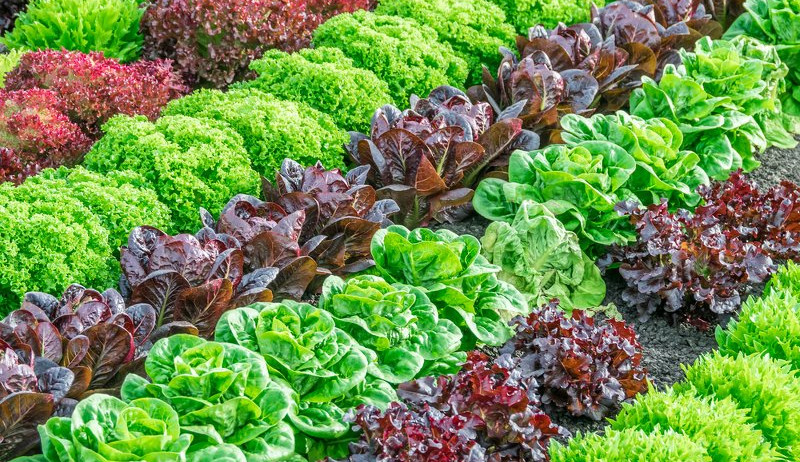
Lettuce is one of the most important crops to have on your market table year-round. It’s fast to grow, so the profitability is great, and it almost always sells well regardless of season. However, depending on where you farm and how hot your summers get, summer lettuce can be a challenge. Heat burns the leaves, germination is a challenge, and the plants do everything they can to bolt. But with some simple adjustments to your lettuce routine, you and your customers can enjoy fresh lettuce all summer long.
Varieties
To grow great summer lettuce, as with most crops, the process starts with choosing the right seed. Some lettuces are simply more heat tolerant than others, and they are worth seeking out for that reason. Talk to your seed supplier or read through the descriptions. In my experience, if the catalog goes out of its way to say one particular seed is heat-tolerant, it usually is. Additionally, it is worth noting that growing summer lettuce isn’t just about head lettuce. You can buy “multi-leaf” varieties (or transplant head varieties densely) for a cut lettuce option as well. The one thing you can’t do, for the reasons described below, is just sow it directly into the soil.
Germination
Germination rates for lettuce fall dramatically past 75 degrees F, so when your soil temperatures eclipse that mark the seeds will go mostly dormant and fail to germinate at any useful rate. This effectively puts the act of direct seeding in the summer fairly out of the question. Instead, you will have to abandon your seeder and start all of your lettuce in trays or soil blocks—even for cut lettuces as described above. But even that requires some adjustment, because you cannot simply add your trays to the greenhouse and expect seedlings.
Again, lettuce needs cooler temperatures to germinate, so you will have to get creative. We place our trays in a cooler with one ice pack for a full 24 hours. This brings the temperature into the range of 50 to 75 degrees for the night. (You can also use a basement or any cool area.) Then we pull them out and put them somewhere relatively cool—in our case, a garage, but it could also be a shade house or just outside under some trees—until we see germination. At that point, you can put the trays very low to the ground inside of a greenhouse with good ventilation if need be so they are protected from the rain. Water them often, however, with the coldest water possible. That will keep the plants cool and growing.
Planting Summer Lettuce
Plant your lettuce transplants late in the day (or early on a cloudy day) so the lettuce can have a lot of sunless time to get established. Pour water into the holes where you plan to plant the lettuce to cool it down and give it an instant source of water, and set them into that wet soil as quickly as possible. If you have shade cloth, consider draping it over the lettuce (not touching the leaves) with hoops for the following week, then removing the shade cloth before the lettuce gets too leggy.
Watering Summer Lettuce
Summer lettuce needs two kinds of irrigation. The first is for the roots. This could be drip tape or overhead watering (though in the summer, drip tape is a much more efficient use of water). Regardless, it should be done several times a week, where the lettuce is watered fully through to the roots. The second type of watering summer lettuce needs is just a light misting of the leaves several times per day, especially during the hottest part. This will help cool the plants and give them much needed reprieve from the sun.
Harvesting Summer Lettuce
Whenever your lettuce is ready, it should be harvested as early in the morning as possible, while the lettuce is at the coolest it will get that day. Preferably the lettuce would be dry, but if it needs to be washed make sure that it is dried well before packaging to improve shelf life.




